Giving your dog treats will boost the mutual connection between you and the dog. The treats are also invaluable components, especially if you’re training your dog. If you wish to bless your canine friend with treats, here are the five creative, healthy ideas for dog treats.
1. Blueberries
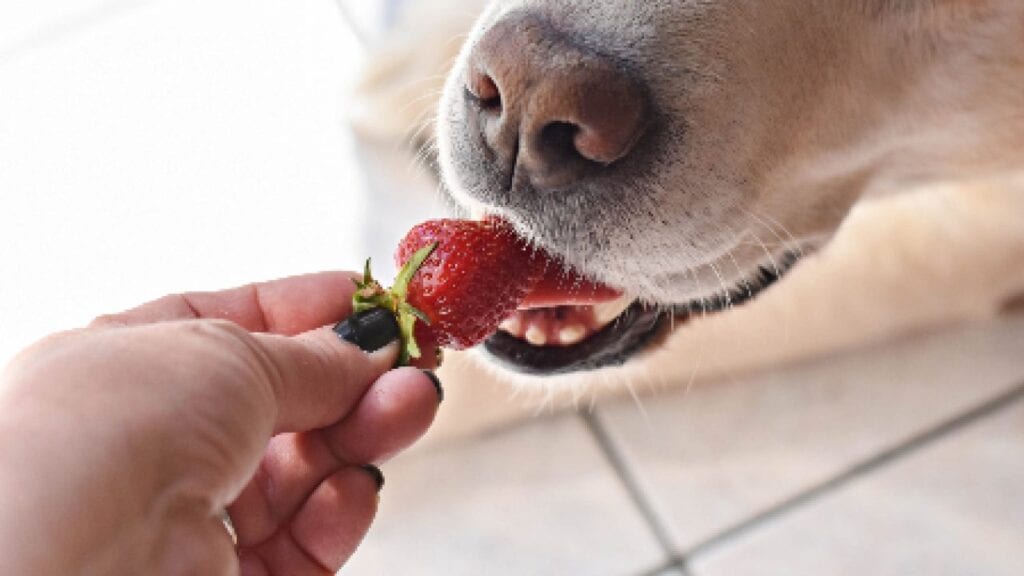
Blueberries are jam-packed with phytochemicals, fiber, and vitamin C. They’re also rich in antioxidants that can give your dog a significant health boost.
If you add them to the dog’s diet, you can also limit the possible effects of brain aging, especially in older dogs. When providing blueberries as treats for your dog, you can feed them either frozen or fresh blueberries.
Before giving your dog the blueberry treats, thoroughly wash the fruits to get rid of dirt or any pesticides, as stated by livelypaws.com. Depending on your preference, you can also make the dog treat with peanut butter and other ingredients to add more flavor and aroma that your dog will love.
If you’re giving blueberries for the first time, monitor the dog closely after ingesting the treat. If you’re not sure about anything, it would be better to consult with your veterinarian. Don’t assume anything.
2. Apples
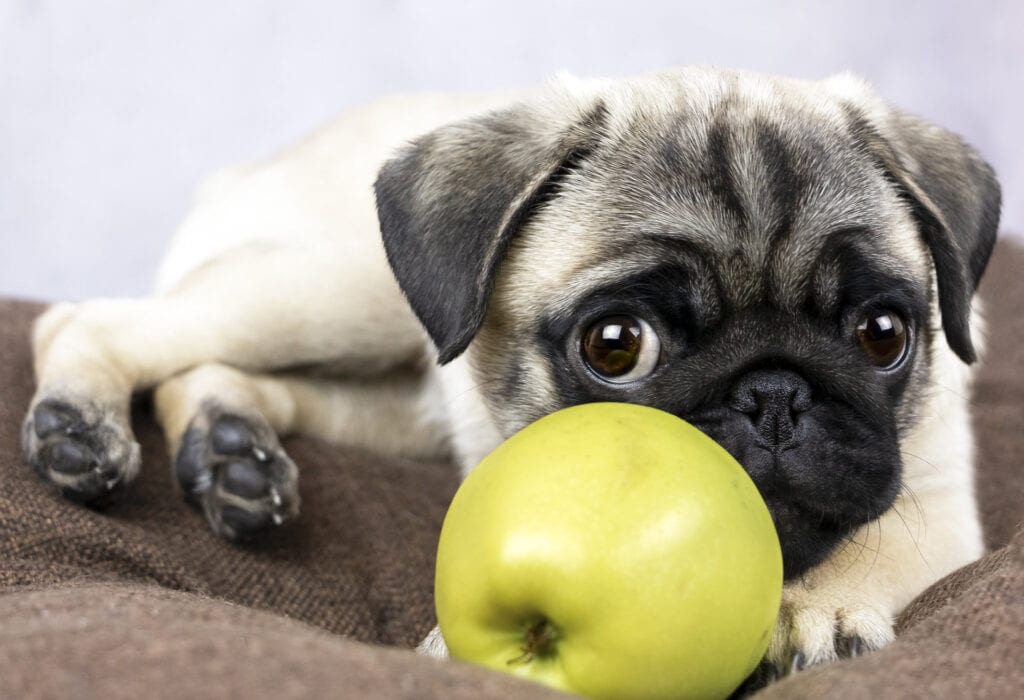
As you probably already know, apples have numerous health benefits for human beings. Dogs can eat these fruits too, and they come with a boatload of health benefits for them.
Apples are rich in dietary fibers and are abundant sources of vitamin A and C that are vital for your dog. They also freshen the dog’s breath and ensure the teeth are clean.
Apples are a great option if you have dogs that are prone to certain types of illnesses or senior dogs with restrictions on meaty treats to maintain a low-fat diet. This is because they have negligible fat and protein content, which will help ensure that the dog maintains the recommended low-fat diet.
When giving apples as treats to your dog, be sure to wash them thoroughly and remove the seeds and core. Give them in moderation and ideally offer them as supplements to their natural foods.
Also, watch out for how the dog reacts to the treats. If the reactions are not rather appealing, it could be having problems digesting apples. The best way out here, therefore, is to start slowly.
If the dog has some underlying health issues, for example, cancer or diabetes, consult with your vet to know any possible side effects that the fruit can have on your furry canine companion.
You can give the fruit to your dog on the form of apple slices dipped in local honey to serve them up. Either way, you may also mix a small amount of homemade apple sauce—preferably a tablespoonful of it into the dog food.
3. Human Grade Freshly Baked All-natural Treats
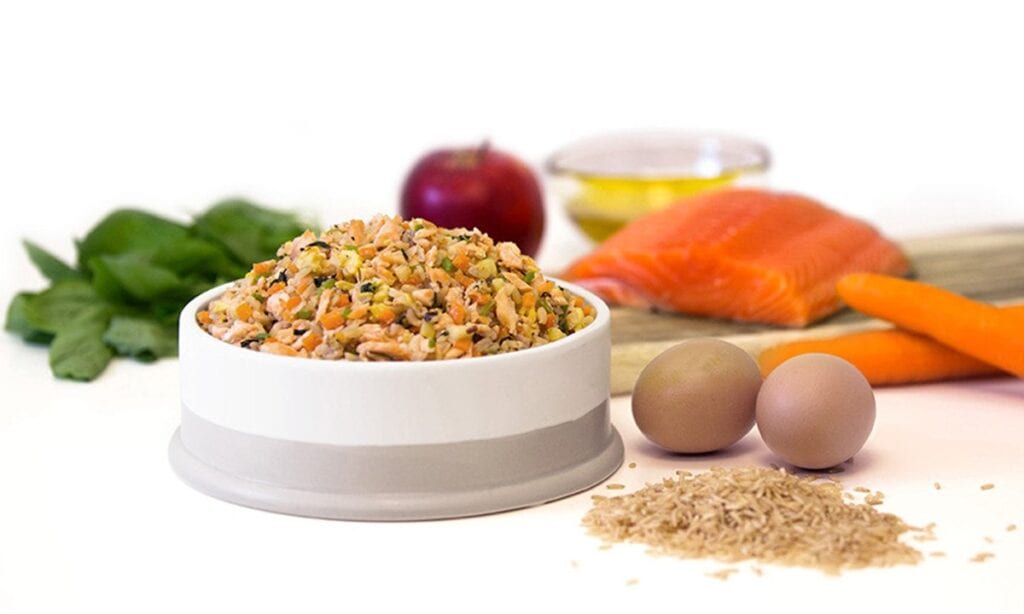
Most dog owners prefer freshly baked all-natural dog treats because they’re convenient and easy to use when rewarding the dog during training. They also supply almost all the necessary nutrients that your pooch needs for a healthy diet.
Here’s the snag. Not all commercial treats are made the same.
If they’re made with lesser nutrient content, they might not be suitable for your dog. Besides, if they’re preserved with dangerous preservatives, they could as well harm your dog.
To avoid this, check the label on the can or package of your commercial dog treats. You can also review the nutritional content, so you’re confident that you’re getting what you paid for.
To avoid a fraud too be sure to check the prices. Reputed brands like Tailbangers list all prices on the website so you know what you pay for. They also publish other related costs and shipping fees on the websites to give you peace of mind when shopping for dog treats online.
4. Carrots

Dogs eat carrots too. Animal health experts even recommend it to dog owners since it is safe and has critical nutritional benefits for your canine companions.
It is also a low-calorie treat, so you won’t have to worry about your dog developing weight issues, among other problems. In fact, you can also use it as a viable option to relieve teething pain in teething puppies.
Finally, it can also enhance the dog’s dental health since it comes jam-packed with fiber, vitamin A and potassium, among other essential vitamins. In serving carrots as treats to your dog, you can add it to their meals.
You can also give it raw to the dogs; however, you should take some safety precautions when giving it fresh to allay any fears of a choking hazard. Be sure to cut them into bite-sized chunks for easy feeding.
Wash them thoroughly before giving them to your dogs, and in case you have any concerns or questions about giving this treat to your dog, make sure that you consult with your vet. He/she will guide you on the right amount of carrots your dog should eat per day.
5. Peanut Butter
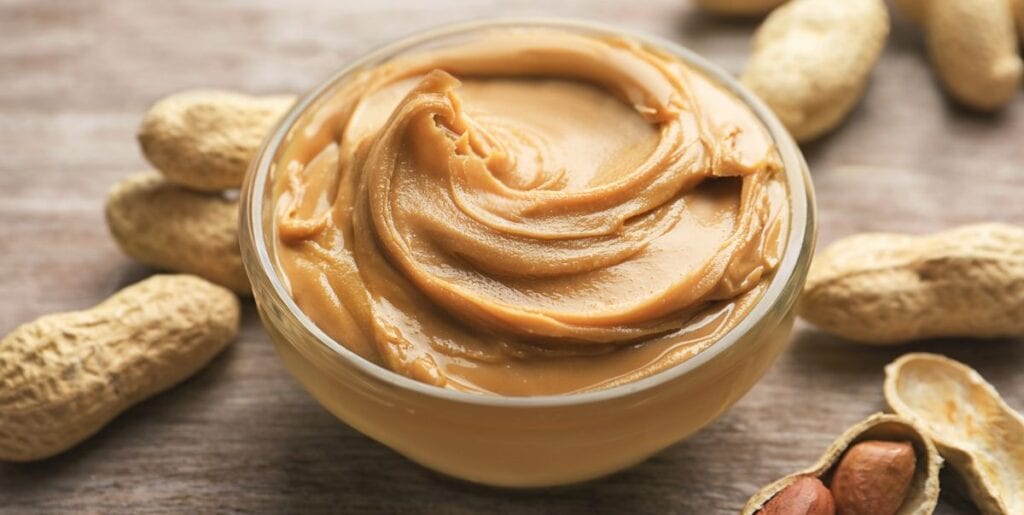
Peanut butter is a fairly popular recommendation, but it is still worth the mention. Dogs eat peanut butter and they like it much. Nevertheless, they don’t eat all types of peanut butter.
Besides, the amount of peanut butter you give to the dog will also be determined by its size. It is full of essential vitamins and minerals for dogs and very rich in proteins as well.
However, it is also a high-fat food meaning that you must use it sparingly to avoid risks of your dog developing troublesome weight issues. Animal health experts recommend that you give your dog the homemade or unsalted peanut butter since it doesn’t come with extra additives and sugar that could be dangerous.
You can serve peanut butter to your dogs by spreading it inside toys or hollow bones. Either way, you may also just let the dog lick it from your fingers or a spoon as a treat.
When serving peanut butter to the dogs, check to ensure that it doesn’t contain Xylitol as an active ingredient. While this compound is safe for human beings, it can cause poisoning to your dog and even lead to death if the poisoning is not handled on time.
Do Not Over Treat Your Dogs
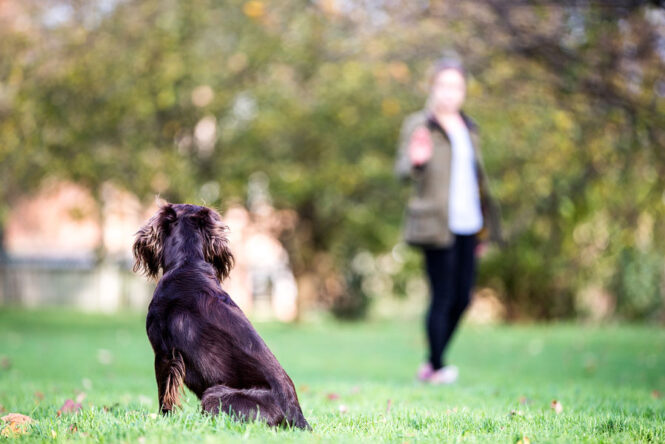
Over-treating your dogs can have serious consequences for their health and well-being. While treats can be a wonderful way to show affection and reward good behavior, it’s crucial to strike a balance and not let them become a significant part of your dog’s diet.
According to the American Kennel Club, treats should ideally make up only about 10 percent of your dog’s daily caloric intake. Excessive treats can lead to obesity, which can, in turn, result in a host of health issues, including joint problems, heart disease, and diabetes.
It’s crucial to remember that not all treats are created equal. Some treats, like ChiDog, can be high in calories and may contain ingredients that can be harmful to your dog. To make informed choices, consult with a certified veterinarian who can provide guidance on the right type and quantity of treats for your dog’s specific needs.
Over-treating can also affect your dog’s behavior. If they receive too many treats, they might become less motivated to follow commands or engage in training sessions. This can hinder your efforts to maintain good behavior and obedience in your furry friend.
Ultimately, moderation is key when it comes to treating your dog. Instead of using treats as a primary form of affection, consider alternative ways to show your love, such as playtime, cuddles, or verbal praise.
By being mindful of the treats you offer and their portion sizes, you can ensure that your dog remains healthy, happy, and well-behaved throughout their life. So, remember, while treats are a delightful part of your dog’s life, don’t overindulge them; their well-being depends on it.
 Imagup General Magazine 2024
Imagup General Magazine 2024



